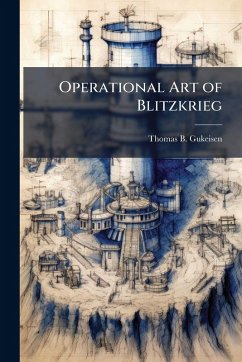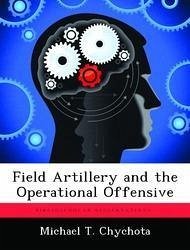
Heart of Operational Art
Translating Strategic Objectives Into Tactical Missions
Versandkostenfrei!
Versandfertig in über 4 Wochen
15,99 €
inkl. MwSt.

PAYBACK Punkte
8 °P sammeln!
This monograph examines the role of the operational level of war to translate strategic objectives into tactical missions. Evidence exists in both the joint and specific service doctrines which suggests that there is a lack of commonality in the language used to express these ends. In appears that to communicate military ends in the joint arena, the operational commander is confronted with the obstacle of a multi-language environment with numerous dialects. Theory provides a construct consisting of two primary elements -ends and levels of war. Specific ends are associated with a given level of...
This monograph examines the role of the operational level of war to translate strategic objectives into tactical missions. Evidence exists in both the joint and specific service doctrines which suggests that there is a lack of commonality in the language used to express these ends. In appears that to communicate military ends in the joint arena, the operational commander is confronted with the obstacle of a multi-language environment with numerous dialects. Theory provides a construct consisting of two primary elements -ends and levels of war. Specific ends are associated with a given level of war. These ends have several characteristics. They are duel linked between the levels of war, having a directive and supportive nature. The directive nature provides the end direction or purpose while the supportive nature reflects the degree of effectiveness sought. These Ends are associated with four levels of war-policy, strategy, operations and tactics. American Joint and service specific doctrines present the operational commander with the dilemma of being able to translate strategic military ends into tactical ends. This problem results from a lack of a common lexicon to express military ends and terms which have common usage but different definitions between the services. Similar to theory, the doctrines specifically recognize the strategic, operational and tactical levels of war, but do imply the fourth -policy. The study concludes that the heart of operational art is the ability to translate strategic objectives into tactical missions. This capability requires an understanding of the nature of military ends, the relationship between ends and the levels of war and the languages and dialects used in the joint and service doctrines. This work has been selected by scholars as being culturally important, and is part of the knowledge base of civilization as we know it. This work was reproduced from the original artifact, and remains as true to the original work as possible. Therefore, you will see the original copyright references, library stamps (as most of these works have been housed in our most important libraries around the world), and other notations in the work. This work is in the public domain in the United States of America, and possibly other nations. Within the United States, you may freely copy and distribute this work, as no entity (individual or corporate) has a copyright on the body of the work. As a reproduction of a historical artifact, this work may contain missing or blurred pages, poor pictures, errant marks, etc. Scholars believe, and we concur, that this work is important enough to be preserved, reproduced, and made generally available to the public. We appreciate your support of the preservation process, and thank you for being an important part of keeping this knowledge alive and relevant.












